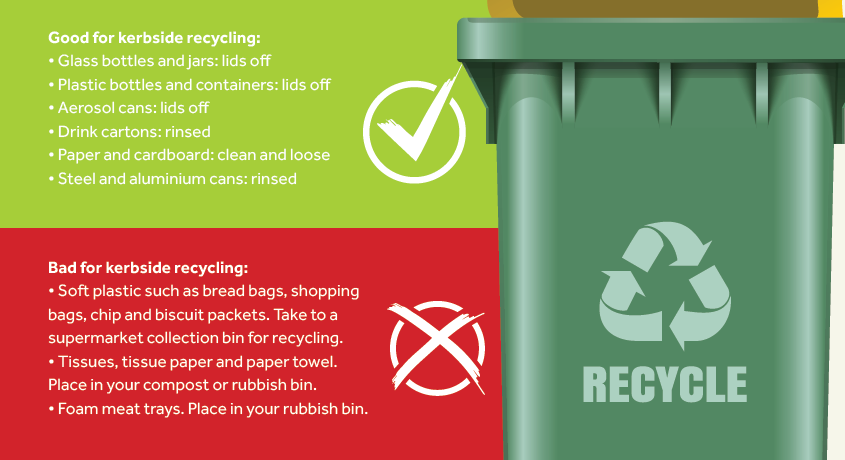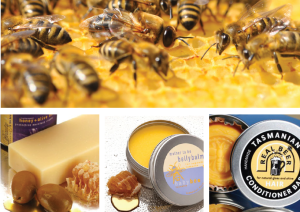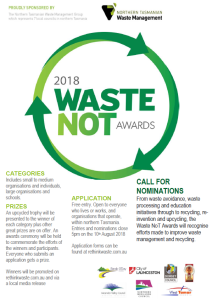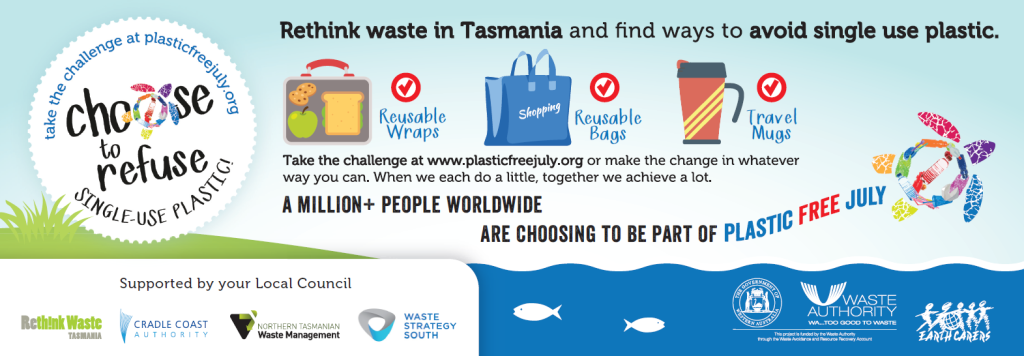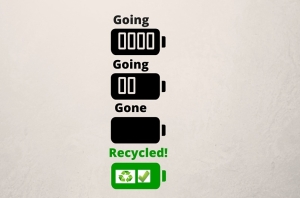The Green Sword policy is a ruling introduced by China to reduce the volume and contamination levels of recyclable materials it imports for reprocessing.
Twenty-four types of recyclables have been banned (ceasing of import licenses) across both industrial and household categories. Those most relevant to Tasmanian recycling services are household plastics and waste paper recycling. Banned plastics include scrap PET, scrap polyethylene, scrap PVC and scrap polystyrene.
Paper and cardboard waste types are still imported but have to meet lower contamination levels of 0.5%, down from the previous 1.5% contamination rate.
This news understandably raises questions about how Tasmanian recycling will be impacted. There are also stories emerging about recycling in Queensland now going to landfill; this is not the case in Tasmania.
Here’s the current situation for Tasmania:
Q. Are my recyclables going to landfill?
No. Currently there is no change to the recycling processes of Tasmanian kerbside recycling services which successfully diverts non-contaminated recycling from landfill.
Q. Should Tasmanians keep recycling?
Yes! Recycling is still the right thing to do – it saves energy, resources and reduces greenhouse gases.
The introduction of the Green Sword policy is likely to lead to a direct stimulus of the recycling and resource recovery industry in Australia which would be a welcomed and much needed development.
Q. Does Tasmanian recycling go to China, and if so, what will happen to it now?
Tasmania has a relatively low volume of plastic recycling recovered via the kerbside recycling and waste transfer station services. Owing to the low volumes, Tasmanian processors such as Veolia, SKM and JJ Richards are able to find domestic buyers for plastic materials, but these domestic buyers are also influenced by international price changes.
Paper and cardboard waste is subject to much tighter contamination controls. Paper and cardboard is still being accepted and processed by Tasmanian contractors, but owing to the more rigorous screening and actions needed to remove contaminated waste paper, the costs of these services are likely to increase.
Tasmanian Councils are working together via the three regional Waste Management Groups (Cradle Coast and Northern Tasmanian Waste Management Groups and Waste Strategy South) and LGAT to consolidate their negotiating power with the state-based recycling processors.
Q. What does this mean for my kerbside recycling service and its cost?
The list of recyclable items and frequency of recycling services has not changed in Tasmania.
Local Councils are currently in negotiation with recycling contractors regarding the increased costs being incurred for screening recyclables and finding alternative commercial markets. These negotiations are being strengthened by the Councils working together via their regional Waste Management Groups and LGAT to consolidate recycling volumes and influence.
Local Government is also in discussion with the State Government regarding the need for financial assistance to support the transition of recycling processing and potential for higher local processing costs.
Depending on the outcome of negotiations and the commercial demand from Australian and international markets for recyclable materials, the cost of processing recyclables may increase resulting in increased costs borne by Councils and their communities.
Q. How can Tasmanian communities help?
- Avoid, reduce and reuse waste as much as possible.
- Support the broader recycling industry by choosing to purchase items that are made from high recyclable content. Examples include eco-deck, Replas boardwalks, outdoor furniture and paper and cardboard products made from 100% recycled input stock.
- Increase the chance of recyclables being accepted for reprocessing:
– Ensure recyclables are contaminant free.
– Follow local council instructions. These instructions can change over time with changes in markets. Refer to the A-Z guides for tips.
– Follow the rule: ‘when in doubt, throw it out’. If an item is not clearly listed as an accepted material for recycling collection, err on the side of throwing it away. Non-recyclable items decrease the effectiveness of the system and reduce the value of other recyclable materials.
Thank you for your ongoing efforts to rethink waste in Tasmania!

